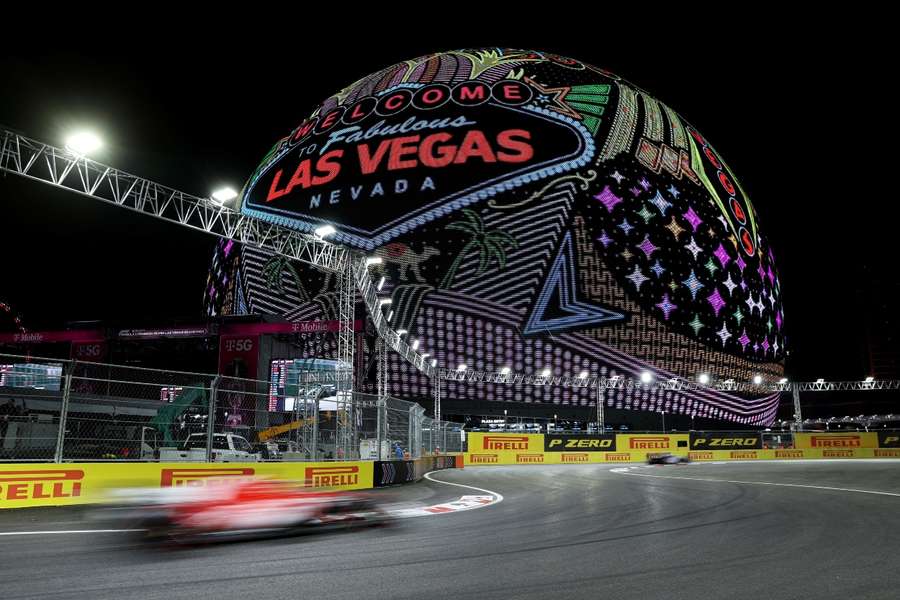Formula 1 Focus: An American Horror Story becomes the American Dream at Las Vegas GP

This week's column is of course all about F1's highly anticipated, long-awaited return to Las Vegas, where - like many who visit Sin City - the sport experienced the highest of highs and the lowest of lows.
It was the best of times
I was in Las Vegas myself just a week before the race and, being driven in an Uber down roads that would form the circuit, I wasn't massively hopeful that the Grand Prix would produce much on-track excitement. As Max Verstappen said, high-speed corners were few and far between, and the new cars are generally too big for street circuits to work.
Happily though, both me and the world champion were proven emphatically wrong, with the track producing the best race of the season on its debut, one that featured numerous overtakes throughout the field.
The highlight was the thrilling three-way fight at the front, with the lead changing hands multiple times as Verstappen, Charles Leclerc and Sergio Perez made the most of the long straights to overtake one another. I'd almost forgotten what it was like to see drivers with similar pace constantly trade places rather than form an orderly queue, and it was a breath of fresh air.
The issue with a circuit that allows for so many DRS-assisted overtakes is that things can seem too easy for the drivers, but that wasn't the case, with the lack of grip coming from the slippy Las Vegas tarmac providing a real challenge for the field.
Add in the fact that it features one of the most iconic pieces of road in the world, the famous Las Vegas Strip, and you've got yourself a circuit that, contrary to expectations, is more than worthy of a place on the calendar.
It was the worst of times
While what most expected to be the main problem with the new race, the racing itself, proved to be anything but, it was still a grand prix weekend full of issues.
Things couldn't have gotten off to a worse start with the Ferrari of Carlos Sainz being taken out by a loose drain cover just eight minutes into the first practice session, which subsequently had to be cancelled so that safety inspections could be carried out. Such inspections caused a considerable delay to the start of the second session, too.
Such a mishap has happened at other circuits in the past and is forgivable, but how things were handled after that isn't.
Not only were fans who had forked out hundreds of dollars for day tickets only able to see eight minutes of FP1 before it was cancelled; they were then, inexplicably, unable to see a single second of FP2, being forced to leave before it started due to "logistical issues" caused by the delayed start to the session.
They then weren't even offered refunds, instead being given a $200 voucher that could only be used at the official F1 store in the city. Given that every single fan, even those with the cheapest tickets, would have spent far, far more than that when you factor in things such as food, travel and accommodation, it was a response that was nothing short of insulting.
Viva Las Vegas
While a dark cloud will forever hang over the inaugural edition thanks to F1's blatant disrespect of its own fans, there's little doubt that the Las Vegas Grand Prix has the potential to be the sport's pride and joy.
In terms of spectacle, perhaps only the sight of cars racing around the streets of Monte Carlo can rival the sight of cars racing down the Las Vegas Strip, but unlike the Monaco Grand Prix, this one can produce thrilling racing too, possessing the best of both worlds like no other race does.
Given that the track itself was a triumph, ironing out the issues that cropped up this year shouldn't be too difficult; For F1, fixing their own behaviour is an easier task than fixing the layout of a bad street circuit.
Add in the fact that it happens to be in America, the one remaining untapped major market that F1 has been desperately trying to crack for years, and it becomes clear that this is an event that could almost singlehandedly change the sport, making it bigger than ever.
Caesars Palace is named after a line of leaders who built an empire, and the streets that lie before it could be the key in Formula 1's quest to build their own.




